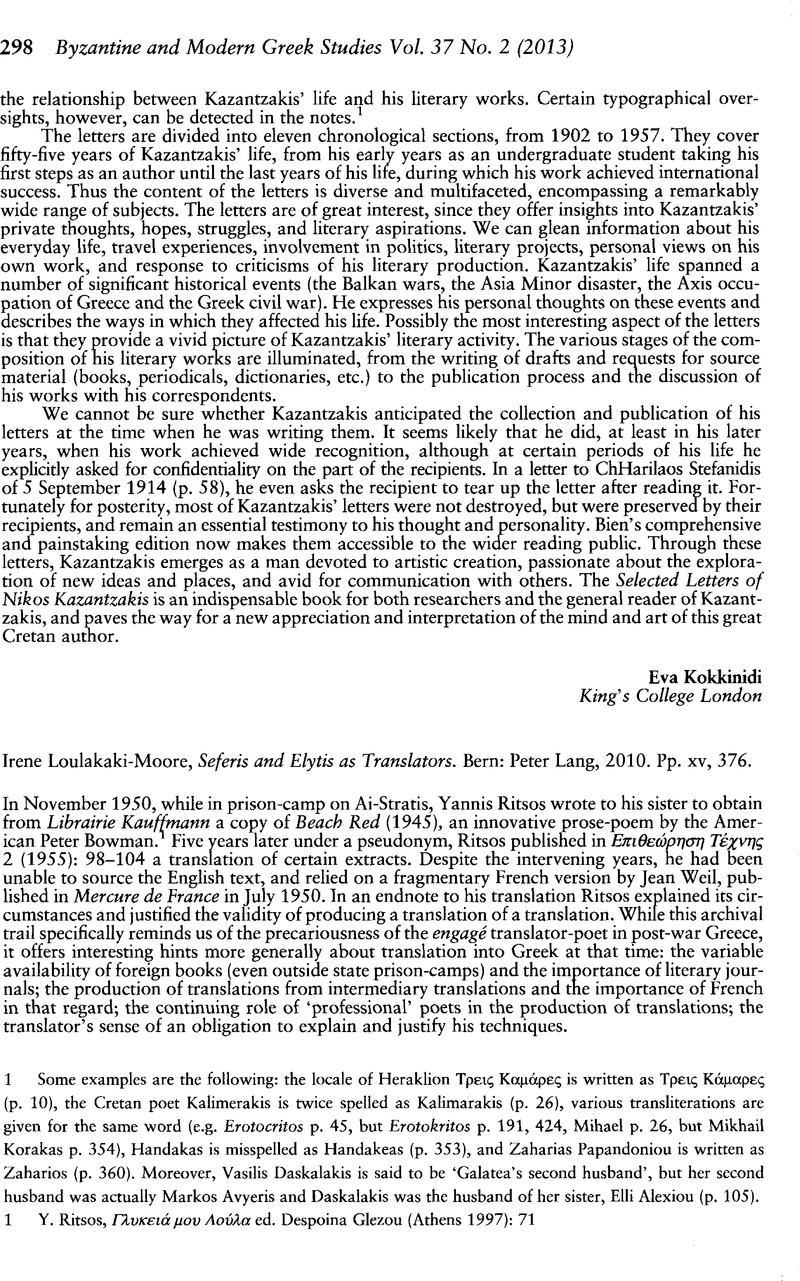No CrossRef data available.
Article contents
Irene Loulakaki-Moore, Seferis and Elytis as Translators. Bern: Peter Lang, 2010. Pp. xv, 376.
Published online by Cambridge University Press: 04 January 2016
Abstract

- Type
- Reviews
- Information
- Copyright
- Copyright © The Centre for Byzantine, Ottoman and Modern Greek Studies, University of Birmingham 2013
References
1 Some examples are the following: the locale of Heraklion Τρεις Καμάρες is written as Τρεις Κάμαρες (p. 10), the Cretan poet Kalimerakis is twice spelled as Kalimarakis (p. 26), various transliterations are given for the same word (e.g. Erotocritos p. 45, but Erotokritos p. 191, 424, Mihael p. 26, but Mikhail Korakas p. 354), Handakas is misspelled as Handakeas (p. 353), and Zaharias Papandoniou is written as Zaharios (p. 360). Moreover, Vasilis Daskalakis is said to be ‘Galatea’s second husband’, but her second husband was actually Markos Avyeris and Daskalakis was the husband of her sister, Elli Alexiou (p. 105).
1 Ritsos, Y., Γλυκειά μου Λούλα ed. Glezou, Despoina (Athens 1997): 71 Google Scholar


